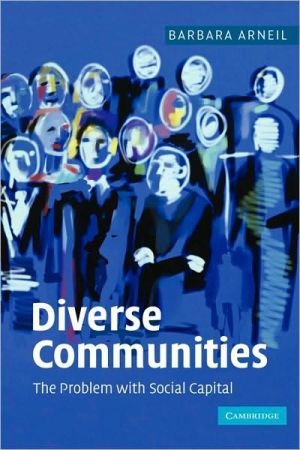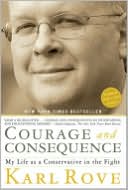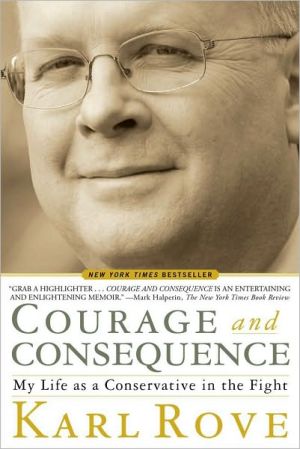Diverse Communities: The Problem with Social Capital
Diverse Communities is a critique of Robert Putnam's social capital thesis, re-examined from the perspective of women and cultural minorities in America over the last century. Barbara Arneil argues that the idyllic communities of the past were less positive than Putnam envisions and that the current 'collapse' in participation is better understood as change rather than decline. Arneil suggests that the changes in American civil society in the last half century are not so much the result of...
Search in google:
Robert Putnam's social capital thesis re-examined from the perspective of women and cultural minorities.
\ Cambridge University Press\ 978-0-521-85719-2 - Diverse Communities - The problem with social capital - by Barbara Arneil\ Excerpt\ \ 1 Social capital, justice and diversity: an\ introduction\ \ ‘Social capital’ is a term used by Robert Putnam in his best-selling book Bowling Alone: The Collapse and Revival of American Community (2000). It is a clarion call for a renewed civic engagement in the Western industrialized world, most particularly the United States of America. The social capital thesis has proven to be extraordinarily powerful, spawning a veritable industry of research that analyses every facet of social capital in America and beyond. Its impact has been felt from the highest of political offices through academic circles and local community organizations to average American citizens.\ Social capital, as a concept, has had such a profound impact in such a short time for several reasons. First, it represents an important shift in focus, within Western political theory, away from either the state or citizen to the civic space in between. In this regard, the social capital thesis parallels two influential schools of thought within contemporary liberal democratic theory, namely communitarianism and ‘third way’ theory. In both cases, civic space or community is the starting point of analysis, rather than either the rights-bearing citizen of liberalism or the equality-bearing state of socialism or social democracy. This theoreticalshift is relatively young, but the potential significance is profound. In essence, a new theoretical paradigm that seeks to transcend the left/right divide through an emphasis on the space in between the individual and the state is challenging the two great ideologies of the modern era, liberalism and socialism.\ But social capital, in the hands of Robert Putnam, is also powerful because it goes beyond a normative theory of civic space, to bring a hard, quantitative edge to the analysis of community, through the evaluation of an extraordinarily large amount of collected data of individual behaviour and opinion. Social capital, unlike the philosophical versions of ‘community’, is thus ‘quantifiable’, according to Putnam. He is attempting to ensure that his analysis of community is based not simply on a normative or prescriptive vision of the past or future, but on a theory of civic society rooted in empirical science.1 By measuring participation in civic associations and social activities, changing attitudes of trust and reciprocity in the general public through longitudinal surveys, and declining rates of voter turnout and involvement in political parties and organizations, Putnam provides data to buttress his theories empirically. As such, his thesis potentially represents an equally important development in the broader world of social sciences, namely a bridge between the ‘scientifically’ oriented discipline of economics, with its emphasis on quantifiable results and individual aggregate analysis, and the more culturally or normatively focused study of politics, society and community. It has been argued, by some, that this conduit will work both ways, by bringing a tough, quantitative edge to the study of society, while simultaneously opening up economic research to ‘social’ variables that had previously been considered extraneous.\ Important as these theoretical shifts are in both economic and political theory (and they will be examined in more detail shortly), neither of them provides the full explanation for the powerful appeal of Bowling Alone. Ultimately, it will be necessary to go beyond the realms of academic literature to the current state of US society, and liberal democracies more broadly, in order to get to the heart of this phenomenon. The popular power of Bowling Alone lies not in its theoretical innovations in the academic world, important though these changes may be, but rather in the emotive central appeal, particularly in the United States of America, of the fundamentally Christian narrative (paradise, the fall, the promise of redemption) that lies at the heart of Putnam’s thesis: an idyllic and unified ‘American community’ of the past has, over the last thirty years, ‘fallen’ apart, and can be redeemed in the future only through a renewed commitment to civic participation and unity.\ As I develop my argument in the pages that follow, I shall challenge this ‘meta-narrative’ underlying Putnam’s analysis by examining its three stages – the past, present and future of social capital – in light of the gendered and cultural dimensions, which are often hidden, of this story of ‘collapse’ and ‘revival’. For, appealing as Putnam’s story might be to a large number of American citizens and scholars, I will argue that the changes that have occurred within American society over the course of the twentieth century have very different meanings when viewed from the vantage point of either women or cultural minorities.2 The paradise of the Progressive Era suddenly becomes much less idyllic than imagined; the ‘pulling apart’ of American communities is no longer as negative as suggested by Putnam, to the degree that it serves to correct past injustices. And the current divisive nature of civic society may even be positive if it represents the continuing struggle for equality, recognition and the inclusion of women and cultural minorities in contemporary America. Put simply, the central theme in the narrative of twentieth-century America as seen from the perspective of historically subordinated groups may not be one of ‘collapse’ or ‘pulling apart’ at all but the, as yet, unfinished and, at times, profoundly divisive story of realizing justice in an increasingly diverse society. Recognizing these multiple and conflicting narratives in American civic history, as well as analysing the degree to which the search for justice in diverse communities is either complementary or counter to the search for civic connectedness, unity and solidarity, are particularly important as one moves beyond the past and present of American community into the future.\ Social capital: definitions\ Social capital was defined in a number of different ways over the course of the twentieth century. L. Judson Hanifan, an American Christian educator of the Progressive Era, was the first to use the term ‘social capital’, in 1916. His definition began an American tradition in the social capital literature: one that tends to emphasize the functional nature of social capital, as an investment in the present that will reap larger public and private benefits at some point in the future.\ In the use of the phrase social capital . . . [I refer to] good will, fellowship, sympathy, and social intercourse among the individuals and families who make up a social unit . . . The community as a whole will benefit by the cooperation of all its parts, while the individual will find in his associations the advantages of the help, sympathy, and the fellowship of his neighbours. (Putnam and Goss, 2002, p. 4)\ As Putnam concludes: ‘Hanifan’s account of social capital anticipated virtually all of the crucial elements of later interpretations of this concept’ (Putnam and Goss, 2002, p. 5).\ Canadians provided the next account of social capital, through both academic and official channels. In 1957 the Royal Commission on Canada’s Economic Prospects published a report entitled Housing and Social Capital. Unlike the American view of social capital, this report sees the building of community as an end in itself rather than an instrumental tool to serve other, presumably larger, goals. ‘Social capital and its associated institutions . . . [are] what is meant by civilization in the highest sense; they are worth having in themselves; they justify industry even as they facilitate it’ (Dube et al., 1957, p. 3).\ The American school of social capital: Tocqueville, Coleman and Putnam\ Putnam follows in Hanifan’s functionalist tradition, defining social capital as the ‘connections among individuals – social networks and the norms of reciprocity and trustworthiness that arise from them’ (2000, p. 19) that ultimately ‘enable participants to act together more effectively to pursue shared objectives’ (1996, p. 56). Putnam’s thesis also builds upon the work of American sociologist James Coleman, who uses an economic model to define social capital as the set of resources that inhere in family relations and in community organizations that are useful for the development of children (Coleman, 1988). Putnam is also explicitly part of a peculiarly American school of civic thought, stretching from Alexis de Tocqueville to Gabriel Almond and Sidney Verba, who see civic society as the critical component of a robust American democracy (Putnam, 1993). Community is thus the repository of a common ‘civic culture’, which unites citizens in a sphere distinct from, and often antagonistic to, the liberal state. This academic context is critical to understanding the meaning of social capital in the American context. Tocqueville, Almond and Verba all saw voluntary associations of individuals as the critical means by which the end of a strong American democracy is ensured. This view of civic society is imported into both Coleman’s and, especially, Putnam’s versions of social capital.\ Putnam’s and Coleman’s theories of social capital, however, are different from the perspective of either Tocqueville or Almond and Verba on three grounds. The first is the centrally held belief of Putnam and Coleman that civic life in the United States, once robust and leading to good outcomes for individuals, has declined or collapsed. This decline has led to negative effects, from bad government, poor neighbourhoods and economic ills (Putnam) to increased levels of high school drop-outs and poor educational outcomes (Coleman). Thus, America needs to consider, it is argued, the ways in which social capital may be rebuilt in the future. Due in part to the functional aspect of community in Coleman’s and Putnam’s theories of social capital, the focus is largely on the amount of social connectedness rather than a detailed analysis of the nature of any past or present connections.3 Thus, future prescriptions need only increase the amount of connectedness in American society with little reference to the nature of these connections. As shall be demonstrated throughout this book, how communities are formed, as well as the kinds of connections by which they are constituted, are absolutely critical to the meaning of community and the changes to it, from the perspective of both women and cultural minorities. Given the historical forces of exclusion and assimilation in civic society in the past, the nature of the connections (namely the kinds of organizations and relations that are either fostered or discouraged) will ultimately decide whether the needs of historically subordinated groups are served within any future community. Thus, the nature of the connections in any given community is what ultimately determines its capacity for justice.\ The second important difference between Putnam’s and Coleman’s thesis and either the historic civic culture tradition of American letters or the contemporary communitarian and third way theories is the centrality of the term ‘capital’ in their theories. The use of ‘capital’ as a term (as opposed to employing alternatives such as community or civil society) allows Putnam and Coleman to deploy all the connotative, normative and methodological underpinnings of other forms of capital. Thus social capital, like other forms of capital, is an asset that accrues through hard work and commitment. It is an investment now, for greater dividends in the future; and is available to anybody who works hard to get it and who makes the right choices in terms of their own time and resources. In other words, for Coleman and Putnam, social capital is a largely unproblematic, instrumental concept; the functional means by which greater ends are achieved. Capital building, needless to say, is perceived to be almost entirely positive in terms of its outcomes. As such, community is seen as an entity that ultimately allows its members to ‘more effectively pursue shared objectives’ – that is, to solve the problem of social cooperation amongst self-interested individuals.\ It should be noted that the ‘capital’ of social capital, for Putnam and Coleman, is different from other forms of human or physical capital, because, while the proceeds for investment in either human, physical or financial capital return largely to the individual, any investment in social capital will often benefit others rather than the individual making the investment of time or energy (Putnam, 2000, p. 20; Coleman, 1988, p. S116). Thus, while somebody might work hard to accrue human, physical or economic capital, and reap the resulting profits, an individual making investments in social capital will probably see other members of the community reap the rewards. This unique aspect of social capital is critically important, particularly in relation to the gendered dimensions of social capital formation in Coleman’s and Putnam’s analyses. While they both see this element of social capital as largely unproblematic, their analyses tend to brush over the unequal role played by women in past and present forms of other-oriented social capital building; perhaps most worrying, however, is their tendency to provide future prescriptions of social capital building that continue to incorporate an unequal burden on women. Thus, the extent to which women are expected to invest in social capital formation in order that their children, husbands and communities may benefit is, as will be shown, an underlying and sometimes hidden assumption in the American social capital literature, beginning with James Coleman, but adopted in a more sophisticated version in Robert Putnam’s thesis.\ The third and final way in which Putnam differs from Tocqueville is with regard to the meaning he gives to ‘social’ in social capital. The ‘social’ sphere has from its inception within liberal theory been a separate sphere from that of the political, the former being associated with the diversity of voluntary relations between individuals, the latter ultimately with the coercive and unifying power of law. But the ‘social’ aspect of social capital goes beyond a liberal or Tocquevillean notion of civic participation to an appeal for civic virtue and unity. Thus, implicit within the call for the ‘revival’ of American community is the transcendence of difference: a ‘coming together’ of disparate parts under one unified set of shared civic values. This is not a new thesis. As Sheldon Wolin argues, the notion of ‘social’ in the liberal thought of the late nineteenth and early twentieth centuries ‘largely centered on the attempt to restate the value of community, that is, the need for human beings to dwell in more intimate relationships with each other, to enjoy more affective ties, to experience some closer solidarity than the nature of urbanized and industrialized society seemed willing to grant’ (Wolin, 1960, pp. 363–4, emphasis added). To the extent that Putnam ultimately seeks a civic community in which citizens transcend difference in order to ‘come together’ to form a common ‘civic culture’, his particular version of ‘social capital’ goes beyond the economists’ model of cooperative self-interest or Tocqueville’s ‘nation of joiners’ to reflect a neo-republican vision of civic society. As shall be shown, however, through an analysis of both historical and present articulations of social capital theory, such unity can represent an enormously threatening force for those groups that have historically been excluded from or assimilated to American society based on the values or attributes of the dominant cultural group, or that even today contest certain ostensibly ‘universal’ norms in the name of cultural diversity or justice. There is, in a seemingly innocent word such as ‘social’, a potentially very dark side to American community.\ The European school of social capital: a critical perspective\ My analysis will begin with a different definition of social capital as its starting point: what I describe as a critical perspective on social capital and civic society most famously associated with French critical cultural theorist Pierre Bourdieu, but with roots in the thought of Karl Marx and Antonio Gramsci as well as the analysis of civil society by Jean Cohen and Andrew Arato (1992).4 Bourdieu describes his theory of social capital in a famous article published in 1986.5 He begins by breaking down capital into three forms: economic, cultural and social. The use of the term ‘capital’ ‘signals the intention of addressing differential resources of power, and of linking an analysis of the cultural to the economic’ (Baron et al., 2000, p. 3). Like Marx’s analysis of economic capital, Bourdieu believes that social (and cultural) capital are largely accumulated in specific ways as a result of historical relations of power. Bourdieu takes aim at the functionalist, ahistorical and methodologically individualist account of social capital found in economic versions of this theory:\ The social world is accumulated history, and if it is not to be reduced to a discontinuous series of instantaneous mechanical equilibrium between agents who are treated as interchangeable particles, one must reintroduce into it the notion of capital and with it accumulation and all its effects. (Bourdieu, 1986, p. 241)\ Thus, at the heart of Bourdieu’s analysis is the central role that history and power play in the particular constitution of civil society in America or elsewhere. Bourdieu’s point is critical, for capital, from his perspective, does not simply work in an instrumental way, as a free-flowing and functional means of exchange either in the past or the present; it is built up or accumulated over time in particular ways. Moreover, the opportunities for social capital accumulation are not equally open to all, as some might suggest. The past accumulation of social capital weighs heavily on the types of groups and social activity that currently exist (including the degree to which they are seen or measured), as well as shaping the nature of future opportunities for further development.\ Social capital is not, therefore, a benign force working equally in the interests of each and all, but, by virtue of past accumulation, draws boundaries around and between people, reconstructing the same power differentials between those who belong and those who do not in more formal institutions. Thus, Bourdieu concludes that social capitalism as much as economic capitalism is an ideology of inclusion and exclusion: a means by which the powerful may protect and further their interests against the less powerful.\ Exchange transforms the things exchanged into signs of recognition and, through the mutual recognition and the recognition of group membership which it implies, re-produces the group. By the same token, it reaffirms the limits of the group. (p. 250)\ Bourdieu’s definition of social capital is intimately connected with the power that accrues to particular group members as a result of a given network.\ The aggregate of the actual or potential resources which are linked to possession of a durable network of more or less institutionalized relationships of mutual acquaintance and recognition . . . which provides each of its members with the backing of collectively-owned capital. (p. 250)\ Thus, what distinguishes Bourdieu from the American school of social capital is both a critical perspective and a preference for networks and resources rather than the functional theory of social capital, which depends on the transformation of connectedness into trust and, with that, the lubrication and glue that make societies function better.\ In addition to Bourdieu’s theory of social capital, Cohen and Arato provide an alternative view of civil society, rooted in Gramsci’s notion of hegemony. Thus, from a Gramscian perspective, civil society is not a space within which individuals cooperate in various associations and come together but a locus of contestation and division where the hegemony of one culture fights to dominate others. As Jean Cohen summarizes:\ [Gramsci’s] most important category hegemony . . . is meaningless without its corollary concept civil society . . . the cultural dimension of civil society is not given or natural. Rather it is a state of social contestation: its associations and networks are a terrain to be struggled over and an arena wherein collective identities, ethic values and alliances are forged. Indeed, competing conceptions of civil society are deployed in a continual struggle either to maintain cultural hegemony by dominant groups or to attain counter-hegemony on the part of subordinate collective actors.(Cohen, 1999, p. 214)\ Applying Bourdieu’s, Cohen’s and Arato’s theories to the more recent (and more famous) iterations of social capital allows us to consider the extent to which the ‘genesis’ for Putnam’s thesis (the early twentieth-century flourishing of civic groups), serving both as a point of origin from which to measure the decline of ‘social capital’, as well as the model for a future promised land, is shaped by both culture and power. It will become clear that this historical vision of a mythical comparison point from which the present ‘decline’ is measured reflects both historical accumulation and exclusionary cultural boundaries. We shall also examine the extent to which civil society, particularly in the last thirty years, has become a site of social contestation and division as previously dominant groups and norms are contested by women and cultural minorities in the name of justice. Bourdieu’s emphasis on networks and resources rather than trust and shared norms may also make his theory of social capital much easier to reconcile with a multicultural and diverse society.6\ My analysis departs from Pierre Bourdieu’s theory of social capital on two counts. First, I will argue that there are important non-economic factors involved in the accumulation of social capital that Bourdieu did not address fully; to this end I will go beyond class relations to examine both the gendered and cultural dimensions of social capital. Secondly, I will also incorporate the idea of resistance or agency by historically subordinated groups, which Bourdieu – strangely – overlooks in his analysis, as a central explanatory factor in the changing nature of communities and their norms.7 Thus, as Bourdieu ultimately argues, all forms of capital, including social capital, must be analysed in terms of the effect that accumulated power relations have on different groups of people, particularly those who were, and are, negatively affected by such boundaries. But, equally, the shape of social capital accumulation in the past, present and future must also be examined in light of the growing resistance by the marginalized during the course of the twentieth century to just such boundaries and norms.8\ The past, present and future: the challenge of justice and diversity\ \ Putnam’s thesis is daunting in its scope and the sheer weight of evidence amassed. As one critic commented: ‘[It’s like] taking a sip from a fire hydrant.’9 In order to maintain a sharp focus on the questions at hand, this book concerns itself with the issues of civic participation and trust in the past, present and future of the United States. Throughout, I subject the social capital thesis to analysis from both a cultural and a gendered perspective. It is important, given the very different histories of particular groups in America during the twentieth century, not to assume that there is one ‘universal’ story of community to be told; such meta-narratives would obscure the specific (and unique) histories of women and cultural minorities during the same time period. Women’s specific civic experience in both the historical ‘paradise’ of the Progressive Era as well as during the current ‘decline’ is one central focus. Similarly, the specific and diverse experiences of cultural minorities in both the past and present of social capital building provide a second lens through which the story of community may be observed. The purpose of this analysis is not simply to correct some perceived ‘politically incorrect’ wrong. Rather, it is to serve the most traditional of academic goals: to give the most thorough and comprehensive explanation of the particular phenomenon under investigation, in this case social capital, by analysing it from a variety of key perspectives. The critique corresponds roughly to the three stages of Putnam’s narrative – past glory, present malaise or collapse, and future revival – with the bulk of the analysis (like Putnam’s) focused on the current state of ‘collapse’.\ \ \ \ © Cambridge University Press
List of abbreviations viiiAcknowledgements xiSocial capital, justice and diversity: an introduction 1The Progressive Era: past paradise? 15The present malaise in civic participation: empirical and normative dimensions 41The causes of 'decline' in social capital theory 92Civic trust and shared norms 124Beyond Bowling Alone: social capital in twenty-first-century America 163Justice in diverse communities: lessons for the future 200References 241Index 257








